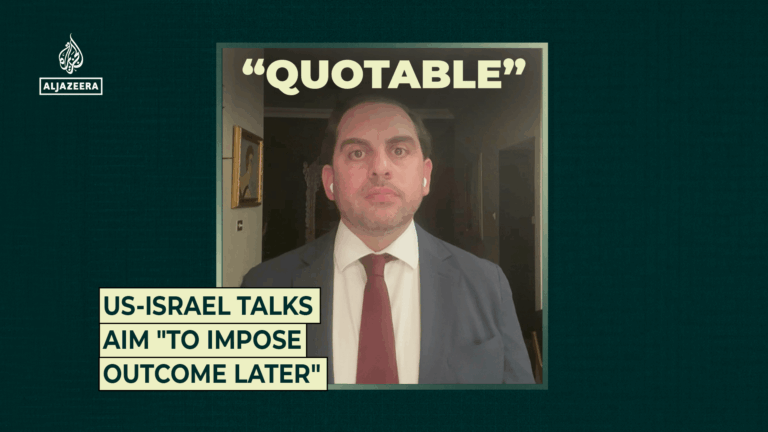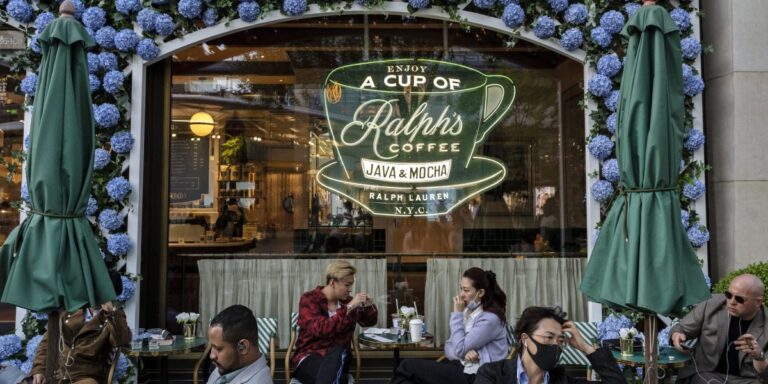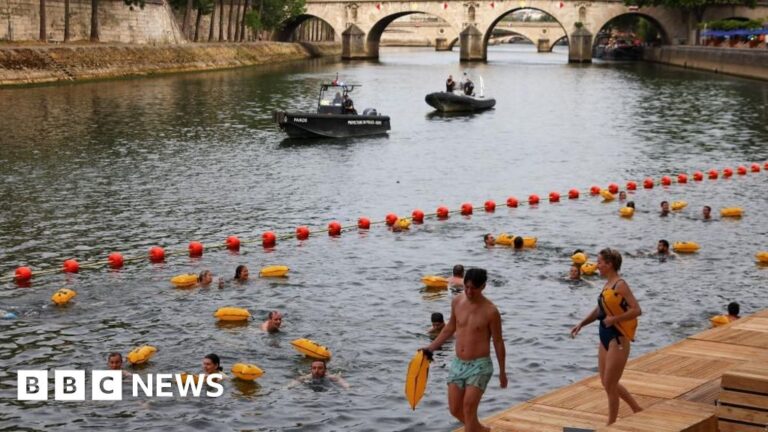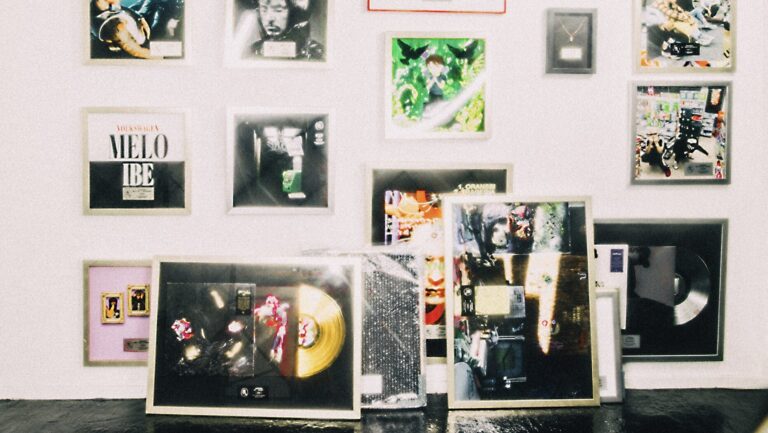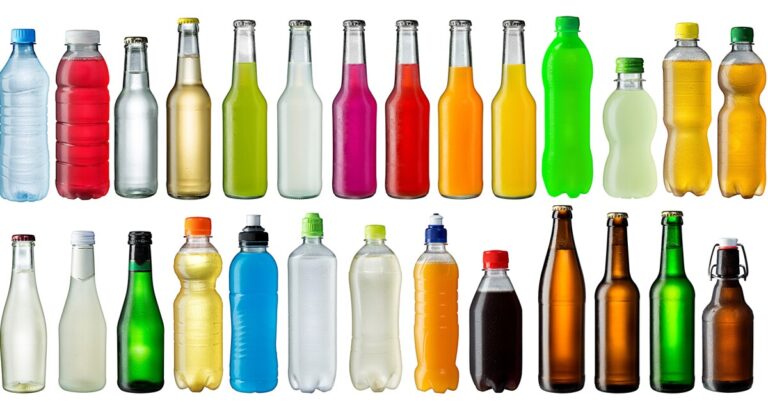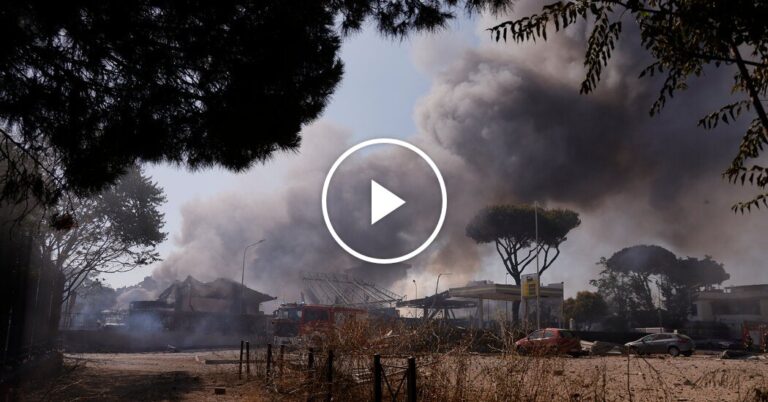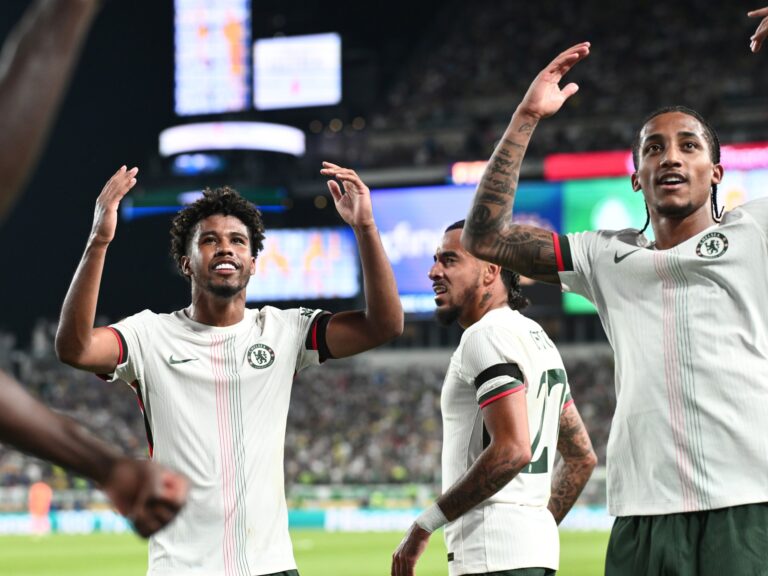Café Dior in Chengdu. Carhartt Coffee in London. Santander Work Café in Brooklyn.
Around the world, brands ranging from luxury fashion houses to workwear to banks are opening up coffee shops.
The phenomenon of retailers hosting coffee shops isn’t exactly new, as anyone who’s ever been to a Starbucks inside of a Target can tell you. But the number of brand-owned and -operated coffee shops seems to be creeping up. Ralph’s Coffee, owned by Ralph Lauren, opened in Manhattan in 2014, and is now neighbored by the Blue Box Café at Tiffany & Co., a Capital One Café, and a Uniqlo Coffee around its Fifth Avenue location. (And that’s not even including the brand restaurants.)
Post-Covid, there’s been a resurgence of interest in preserving or even establishing “third places,” which refers to places to spend time outside of home and work at the same time that brands are seeking to broaden their customer bases on- and offline by investing in customer experiences. Coffee shops, it seems, are working to satisfy both sides.
Sip, sip, pass
Earlier this year, Japanese-owned clothing retailer Uniqlo opened a coffee shop—its first in North America—at its store on Fifth Avenue to “enhance the shopping experience” for customers and project a welcoming brand persona, Nicolas Cessot, head of marketing for Uniqlo North America, told us.
“It’s a great branding proposition for us,” Cessot said. “It is a global flagship, so for us, it’s a global opportunity to continue to spread our brand [awareness] to customers from all over the world.”
Uniqlo has existing coffee shops in Tokyo, where Cessot said customer experience and hospitality is a cultural priority, and Manila. Other retailers, like French fashion brand Maison Kitsuné, also started their journey into coffee in Asia, with the first Café Kitsuné opening in 2013 in Okayama, Japan. Earlier this year, Japanese lifestyle brand Muji opened a food market in Manhattan, its first in the States.
It’s not just brands from overseas expanding their hospitality offerings. American brands Kate Spade and Coach have been experimenting in the hospitality space in Dubai and Jakarta, Indonesia, respectively, while Coach has also opened up coffee shops in Texas and New Jersey.
Beyond reaching new customers around the world, brand coffee shops allow retailers to reach customers across different interests—including those who might not want new clothes, but do want a cup of joe, Cessot said. That seems to be a key reason why higher-end brands like Dior and Ralph Lauren are opening cafés: to reach customers outside of their usual demo, specifically those who may not be able to or may not want to spend big bucks on a purse, but can justify a $7 iced latte.
“It’s giving people this opportunity to engage with the brand from a lifestyle standpoint, even if they can’t purchase a product,” Michelle Baumann, chief strategy officer, commerce at VML, told us.
That being said, a small purchase like a coffee can increase customer “dwell time,” which could mean more time to consider a larger buy. “The longer you’re in [store], the more likely you are to browse, the more likely you are to purchase,” Baumann said.
And, it seems, more likely to post. Canadian clothing brand Aritzia has been operating its in-store A-OK Cafes since 2018, and customers often share videos and images of drink tokens online, Baumann noted. Daniel Boulud, chef at Tiffany & Co.’s Blue Box Café, told Food & Wine earlier this year that “with social media today, [the café] has even more appeal” with its colorful interior.
“[Cafés are] doing a lot in terms of the amplification and being able to create that earned equity,” Baumann said. “You’ve got Instagrammable spaces and a lot of social media exposure.”
After opening its Fifth Avenue coffee shop, Cessot said Uniqlo saw plenty of user-generated content about the location on TikTok and Instagram.
“We’re…encouraging people to create and generate more content so we can continue to spread the news and spread our brand awareness across the country,” he said.
“How do you personify a brand?“
Whether it’s a YSL Café in Paris or an Ikea cafeteria, a unifying purpose among them all seems to be a desire to enhance the customer experience, Baumann said.
At Capital One, which opened its first Capital One Café in 2014, that is certainly the case, said Jennifer Windbeck, SVP of retail bank channels and operations, who told us the move was inspired, in part, by the insight that customers value in-person interactions around customer service and money management needs.
“There’s a major purpose of the café that’s not just basic banking,” Windbeck said.. “It is, ‘How do you personify a brand, and what is that in-person experience?’”
Capital One now operates more than 60 cafés in metropolitan areas across the country, the latest of which opened in New York’s SoHo neighborhood earlier this month. Inside the cafés, the brand hosts events ranging from coding classes to financial literacy workshops, which Windbeck said has helped build Capital One’s brand image as more than a credit-card company. Capital One Cafés also run promos that aim to encourage repeat foot traffic, including one where visitors get free drinks every Monday of the MLB season.
While the ultimate goal is to drive customer sign-ups, Windbeck said the cafés (and deals) are for everyone, not just Capital One customers. Offering amenities like free wi-fi allows Capital One to market to the masses “in a very intentionally non-sales” and “organic way,” she said.
Light roast ahead?
While there are plenty of benefits, opening a coffee shop can be a costly endeavor when considering the labor and materials, not to mention the potential for stains from coffee spills. (Neither Uniqlo nor Capital One would disclose operating costs or whether the cafés are revenue generators, although Windbeck said the continued expansion of Capital One Cafés could be seen as a sign of Capital One’s satisfaction with its results.))
There can also be reputational risks. Besides possibly getting roasted like the beans it’s serving, Baumann noted that a brand coffee shop could be a threat to a brand’s image if the location doesn’t provide an adequate level of service. That’s especially true if the coffee isn’t free she said.
“If you have poor service, if people are waiting for a long time, all of a sudden that’s actually going to detract from the overall shopping experience,” she said.
For help on those fronts, some retailers choose to work with existing coffee brands like Verve Coffee, Capital One’s coffee partner of choice; La Colombe, which is served at Ralph’s; and Allpress, which has worked with Carhartt and Patagonia to help ensure product quality. But as with any business, there can also be risks for partners, Baumann said, citing Ralph’s growing reputation as a tourist destination.
Still, she said, she expects more brands to get in on the trend, especially since it can serve as a way to introduce novelty and surprise customers with additional offerings. If nothing else, visitors to these stores can know one thing for certain: No one’s going to ask them to leave their coffee cups at the door.
This report was originally published by Marketing Brew.
 JAMES ROSS/EPA/Shutterstock
JAMES ROSS/EPA/Shutterstock JOSH STANYER/EPA/Shutterstock
JOSH STANYER/EPA/Shutterstock




